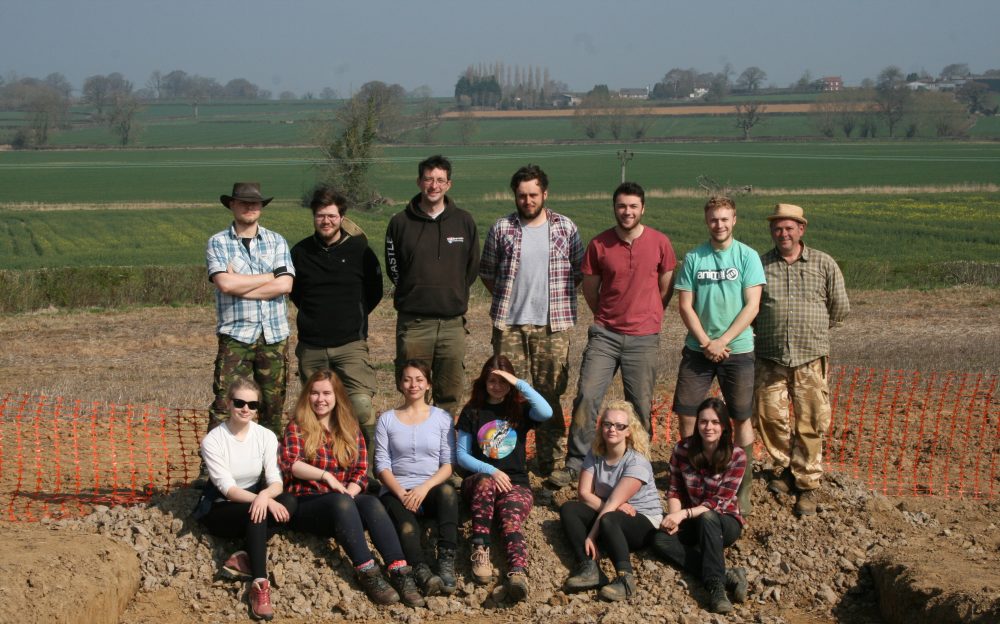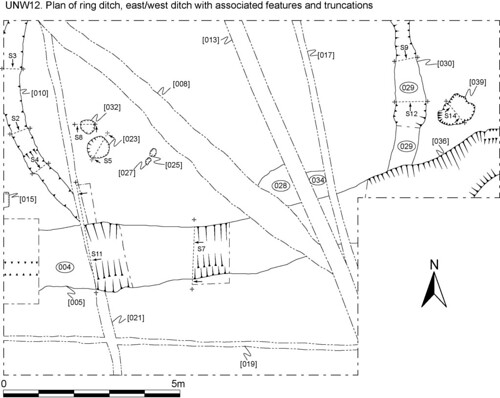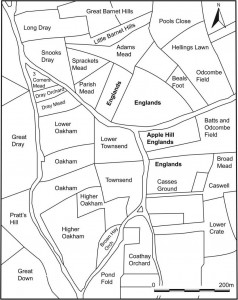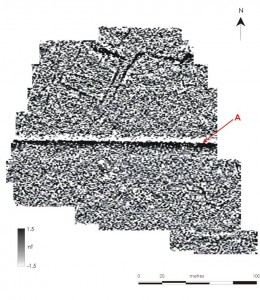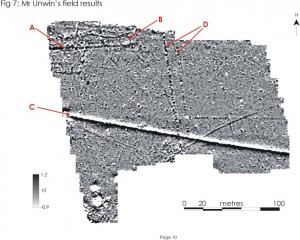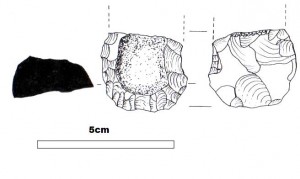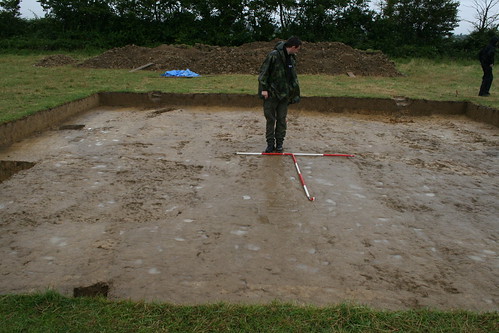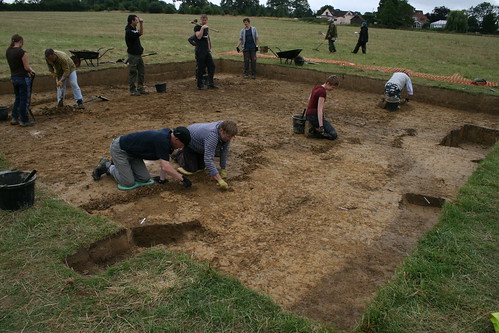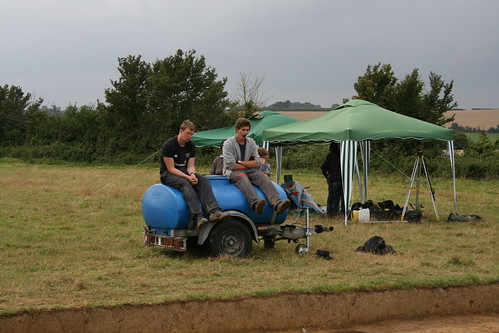The third and final week saw the trench extended and a lot of work to investigate the ditches and sort some modern features (including a septic tank outfall pipe) from the ancient features.
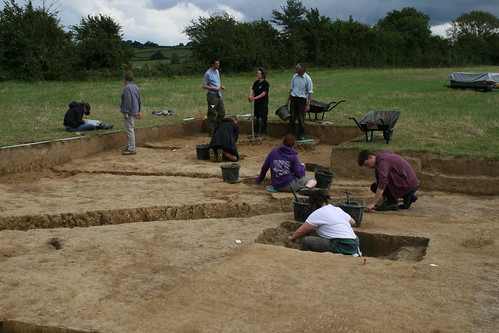
Excavating in Week 3 © The Lufton Project
As archaeological excavation is destruction it was important that everything was properly recorded. A lot of drawings, photographs and paperwork were completed.
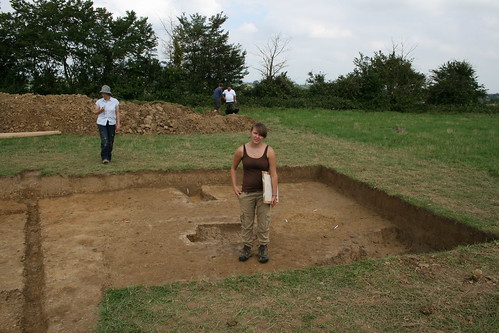
Danni Recording © The Lufton Project
Towards the end of the excavation Mr Unwin (the landowner) came to look at our trench, He was a very genial and tolerant host and the project is very grateful to Mr Unwin and his family for the support they are giving to this work.
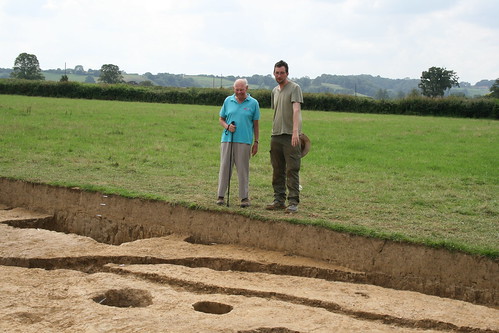
James shows Mr Norman Unwin the trench © The Lufton Project
At the end of the week we had some help from Jamie and Carole Pullen. They lent us a digger and driver to backfill our trench! Then we put the turf back and headed back to Newcastle.
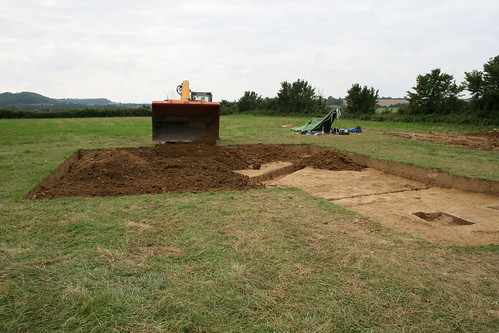
Backfilling the trench © The Lufton Project
